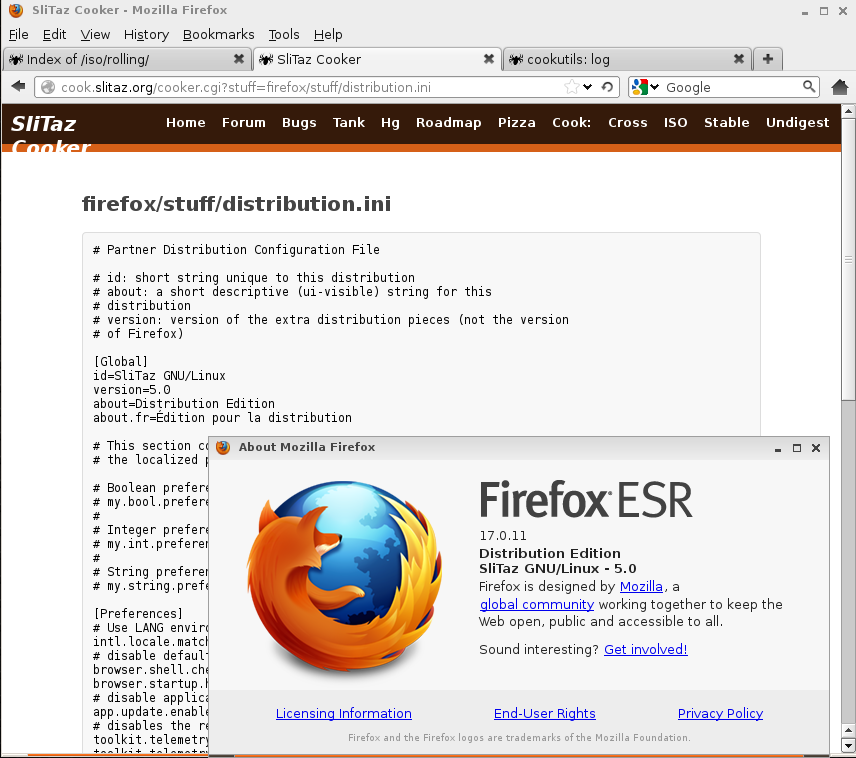Slitaz Install Debian Package From File
Live USBs share many of the benefits and limitations of, and also incorporate their own. Benefits [ ] • In contrast to live CDs, the data contained on the can be changed and additional data stored on the same device. A user can carry his or her preferred operating system, applications, configuration, and personal files with them, making it easy to share a single system between multiple users. • Live USBs provide the additional benefit of enhanced privacy because users can easily carry the USB device with them or store it in a secure location (e.g.
This is a list of Linux distributions that can be run entirely from the computer's RAM. That ability allows them to be very fast, since reading and writing data from/to RAM is much faster than on a hard disk drive. Many of these operating systems will load from a removable media such as a Live CD or a Live USB stick.

E Howard Watch Company here. A ), reducing the opportunities for others to access their data. On the other hand, a USB device is easily lost or stolen, so data and is even more important than with a typical desktop system. • The absence of moving parts in USB flash devices allows true avoiding the and (see ) of hard drives or, meaning small programs will start faster from a USB flash drive than from a local hard disk or live CD. However, as USB devices typically achieve lower data transfer rates than internal hard drives, booting from older computers that lack or newer can be very slow.
Limitations [ ] • LiveUSB OSes like Linux apply all filesystem writes to a that, once full or out of flash drive space, becomes unusable and the OS ceases to boot. • USB controllers on add-in cards (e.g., ISA, PCI, and PCI-E) are almost never capable of being booted from, so systems that do not have native USB controllers in their chipset (e.g., such as older ones before USB) likely will be unable to boot from USB even when USB is enabled via such an add-in card. • Some computers, particularly older ones, may not have a that supports USB booting.
Many which do support USB booting may still be unable to boot the device in question. In these cases a computer can often be 'redirected' to boot from a USB device through use of an initial bootable CD. • have limitations when booting from USB devices – while the (EFI) can recognize and boot from USB drives, it can only do this in EFI mode. When the firmware switches to 'legacy' BIOS mode, it no longer recognizes USB drives. Non-OS X systems may not be typically booted in EFI mode, notably Windows and Linux, and thus USB booting may be limited to supported hardware and software combinations, which can easily be booted via EFI, however, programs like Mac Linux USB Loader can alleviate the task of booting a Linux-live USB on a Mac. This limitation could be fixed by either changing the Apple firmware to include a USB driver in BIOS mode, or changing the operating systems to remove the dependency on the BIOS. • Due to the additional write cycles that occur on a full-blown installation, the life of the flash drive may be slightly reduced.
This doesn't apply to systems particularly designed for live systems which keep all changes in until the user logs off. Download Action. A (known as a Live SD, the counterpart to a ) in a USB flash card reader adapter is an effective way to avoid any duty cycles on the flash medium from writes and circumvent this problem. The SD card as a device has an essentially unlimited life. An OS such as Linux can then run from the live USB/SD card and use conventional media for writing, such as magnetic disks, to preserve system changes; see. Setup [ ] exist to create live USBs; examples include,,,,, and, which works with a variety of distributions.
Comments are closed.